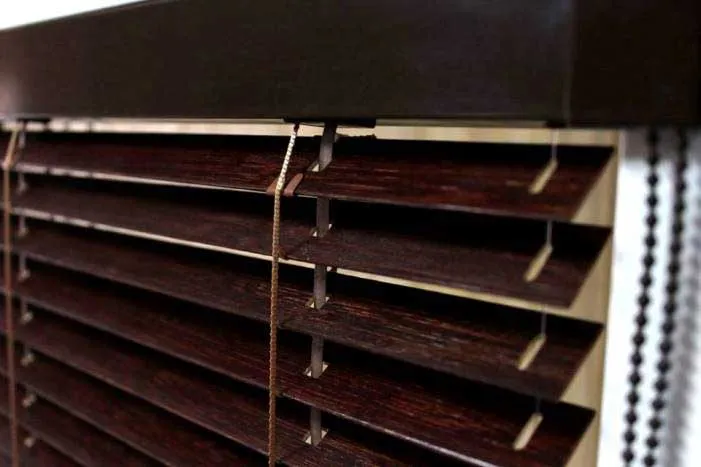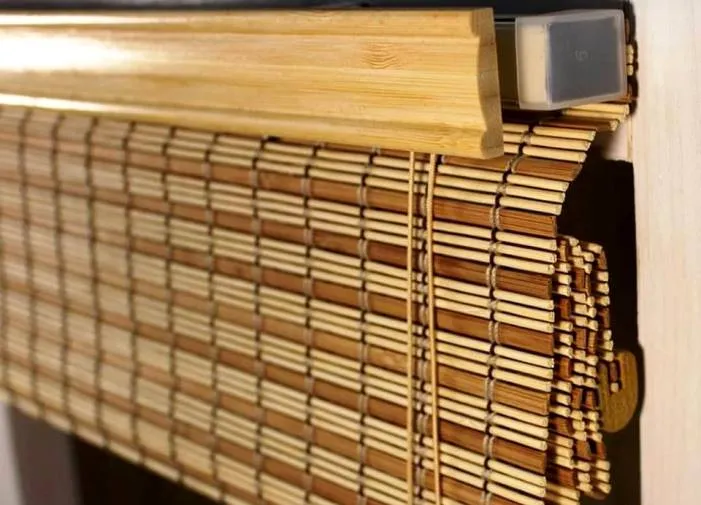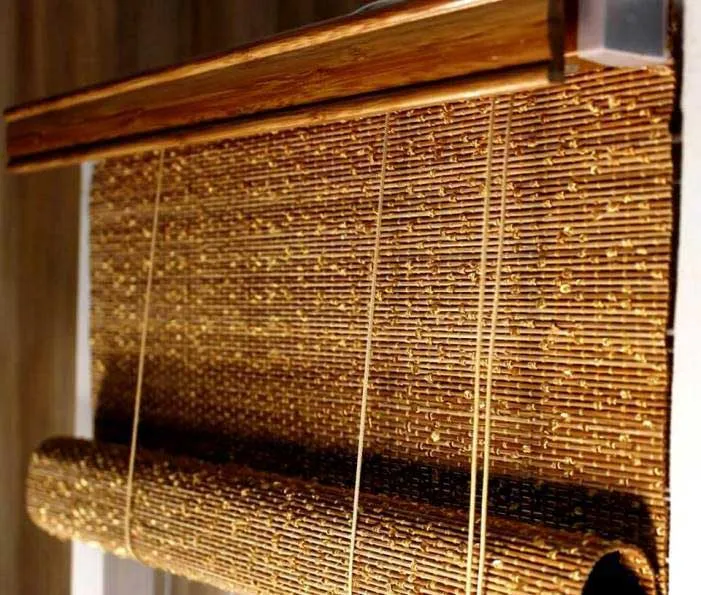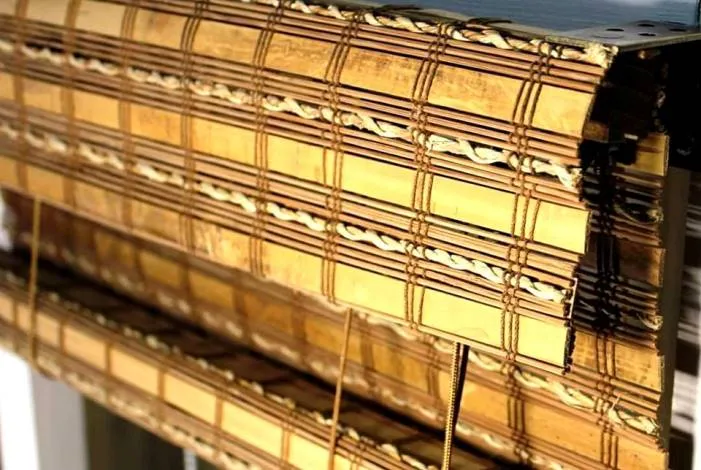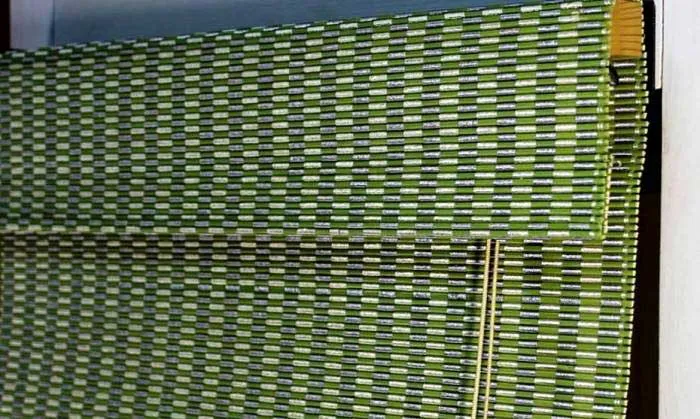Cassette curtains cover a double-glazed window without side gaps because the system is equipped with guides in which the fabric is placed. Thanks to this design, a system with blackout fabric can create complete 100% blackout even during the daytime. There are several system options with their own installation features. When choosing curtains, you should choose which type of system is most suitable for your purposes.
Design features of cassette curtains
Box - located at the top of the curtain; the box contains a shaft with fabric and all the mechanisms of the system.
Guides - aluminum guides are installed from the box on both sides. They can be of two types, flat or U-shaped, depending on the type of system. The guides are installed in accordance with the box and are not interchangeable.
The control is chain, the fabric is set in motion using a control chain. The chain passes through a self-locking mechanism that holds the curtain at the desired height.
All the details of the mechanisms are hidden in cassette curtains, which makes the curtain look compact and attractive in the interior, and also does not attract unnecessary attention on the window. Also, thanks to the guides, the curtain is always in the plane of the window and does not dangle, even when installed on opening sashes that are placed for ventilation.
Cassette systems UNI and UNI-P
Closed systems differ in design, so they can be installed differently, and are equipped with different guides.
Let's consider the UNI cassette curtain with flat guides. This system is mounted exclusively on the locking part of the glazing beads; it cannot be installed on a plane, that is, installation on a window frame or on a wall is excluded. At the back of the system, a shaft with fabric is visible, which does not allow the box to be leaned tightly against the window. To install the UNI system, the depth of the beads (distance from the edge to the glass) must be at least 15 mm, this is necessary to place the lower weight strip between the guides and the glass. If the distance is less, the curtain will get stuck, which will negatively affect the performance of the system. The UNI system uses only flat guides, they are smooth and cover the light opening from the glazing bead towards the light opening (glass), thereby holding the fabric.
The UNI-P curtain is a perfect cassette system with wider installation possibilities. Thanks to some design additions, it does not limit installation options. This system can be mounted both on the wall and on the window frame and glazing beads. The UNI-P curtain is also equipped with U-shaped guides that can be easily installed on any surface. Unlike flat, U-shaped guides do not require glazing beads and glass to hold the fabric; the guide itself holds the fabric without additional window elements, so it can be easily mounted on both plastic and wooden windows and even on windows with shallow glazing beads.
What do cassette systems have in common?
Operating principle - in both systems the basis is a box of fabric. The control mechanisms are also similar. In the cassette system, the mechanism is specific, since it is located inside the box, it differs from open systems and is not interchangeable. Also, in cassette systems, the fabric is covered with guides, which acts as a fixation mechanism and also eliminates the side gaps between the window frame and the fabric.
Due to the many visual similarities, these systems can easily be confused, but once you look at the guides, everything becomes clear.
Differences between systems
The UNI system is more compact, takes up less space and is visually better suited for installation on plastic windows, but due to installation restrictions it is not always applicable and the choice falls on UNI-P instead.
Difference in distance between glass and fabric
Considering that the UNI system is installed in the space between the window glazing beads, there is a minimum of space between the fabric and the glass due to which they can come into contact. This can have a negative effect in the cold season, if condensation appears on the window and the fabric gets wet from it, this will reduce the service life of the curtains, and stains may also appear on the fabric. The UNI-P system has an advantage in this regard, since the fabric is located between the guides and is slightly moved forward, the curtain does not touch the window, which means the fabric is always at a safe distance from the glass.
There are also slight differences in the placement of the bottom weight. In the UNI system, the fabric sinks to the bottom glazing bead and can no longer move further, as it rests against the glazing bead. In turn, the UNI-P system is not limited by glazing beads and the guides can be extended to the edge of the sash, which allows you to lower the fabric even below the glazing beads, thereby completely blocking the light opening both on the sides and below. In this option, possible gaps between the glazing beads and the fabric are eliminated.
Restrictions on opening the sash
When installing a cassette system, you should always take into account that the box takes up space on the window and reduces the opening angle of the sash. That is, when installing a curtain, the window can open less than 90 degrees if the distance from the frame to the slopes is insufficient. There is also a slight difference here: the UNI system takes up less space than the UNI-P, so it does not affect the opening angle of the window so much.
Installation of curtains
Let us briefly describe the options for installing cassette-type curtains. We recommend installation exclusively with self-tapping screws without additional options such as tape or latches. In the summer, the adhesive tape heats up and loses its properties, and the latches are not suitable for blind sashes, on which there is no way to catch, so there are situations when one curtain hangs on the latches and the second is still screwed on with self-tapping screws and it looks ridiculous.
Another thing is the guides; they are immediately supplied with foam-based mounting tape, which tightly fixes the guide along the entire plane of the window. The guides are not a power element of the structure, they do not experience loads, so they can be glued with tape, but even in this option we use a special foam-based tape that firmly holds the guides on the window. Before gluing the tape, it is necessary to degrease the surface of the glazing beads, otherwise the guides may not be fixed tightly enough.
Advantages of cassette-type roller blinds
Limitation of luminous flux and the possibility of convenient adjustment;
Increased service life of the fabric and system thanks to the protective box;
There are many fabrics to choose from; all fabrics that are used in classic roller blinds are suitable for cassette systems;
Compactness of the product and protection of the fabric from contamination (when the fabric is wound in a box);
Visual appeal of the product due to hidden control mechanisms.
Disadvantages of cassette curtains
There are practically no disadvantages in cassette-type systems; they are modern, have an excellent appearance and are not inferior in functionality to open-type systems. One drawback is the restrictions on winding the fabric. There are dense fabrics that, when wound on a shaft, significantly increase its diameter; therefore, when installing the system on a door, all the fabric may not be wound into the box, since there is not enough space for it. For such cases, open systems with high gears or standard systems 25 and 35 are used, depending on the required width and height of the product.
All systems presented on our website are calculated taking into account the maximum winding parameters of each fabric. If the curtain cannot be wound onto the shaft, the calculator will warn you that a product of this size cannot be ordered, in which case you should replace the system with another one or contact the manager for advice.
